FTScratchBuild
The latest FT DIY Airplane design is here! It's the FT Dart, a rather unique looking flying wing based on our legendary Kraken, the two motored beast of an RC plane. Like the FT Kracken, the Dart has yaw authority using differential thrust produced by its dual props. Check it, and our new location, out in this new video.
The plane is perfect for precision flying. Got two trees together? No problem. You can use the differential thrust to simply adjust your heading and make it through the gap.
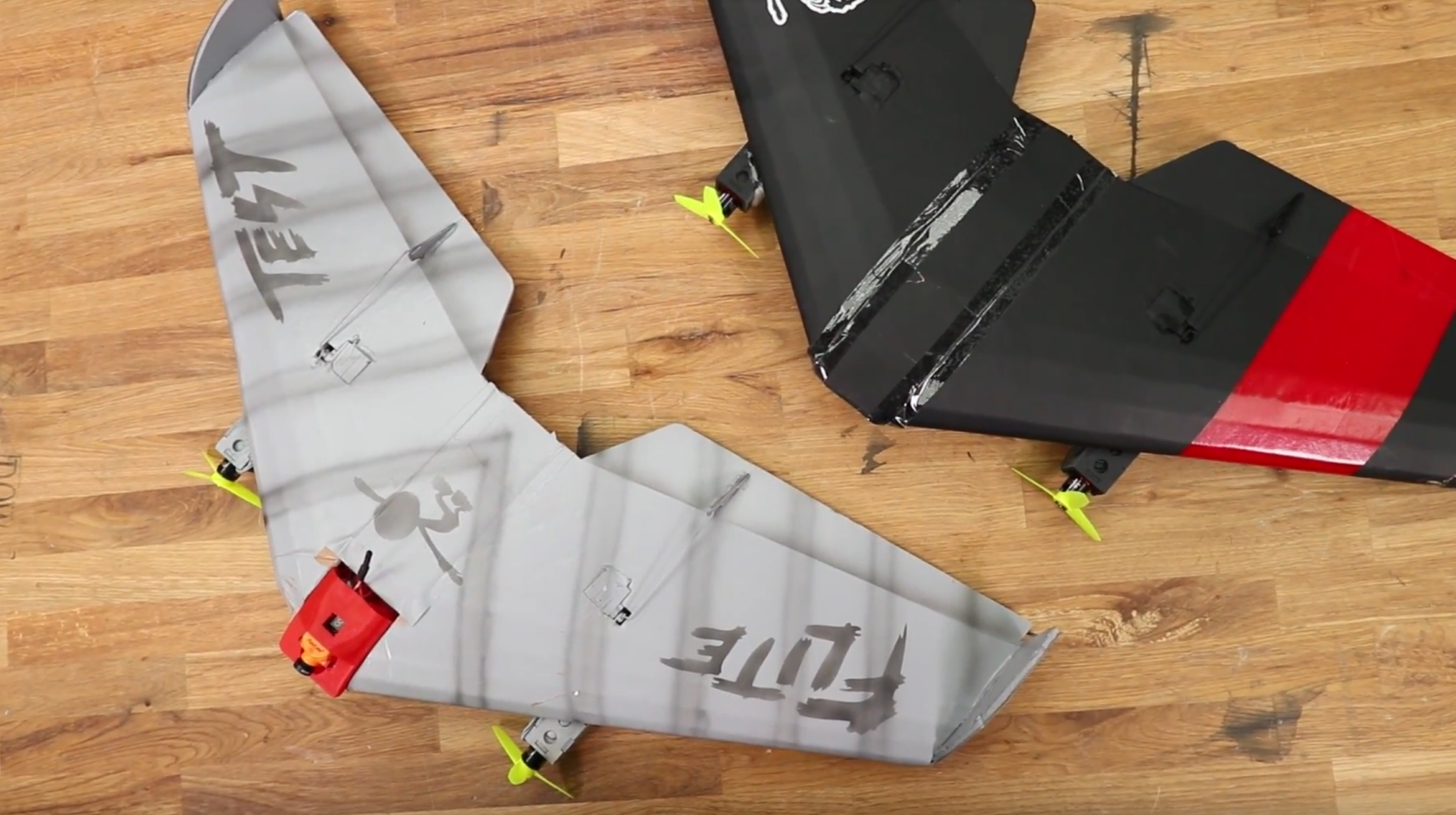
The plane is perfect for FPV. One of our chief 3D Printing specialists, Chad Lewis, designed a special FPV pod that goes on the front of your dart. This makes installing your micro FPV cam very easy indeed. Here's a link to the STL file - FT Dart FPV Pod.stl
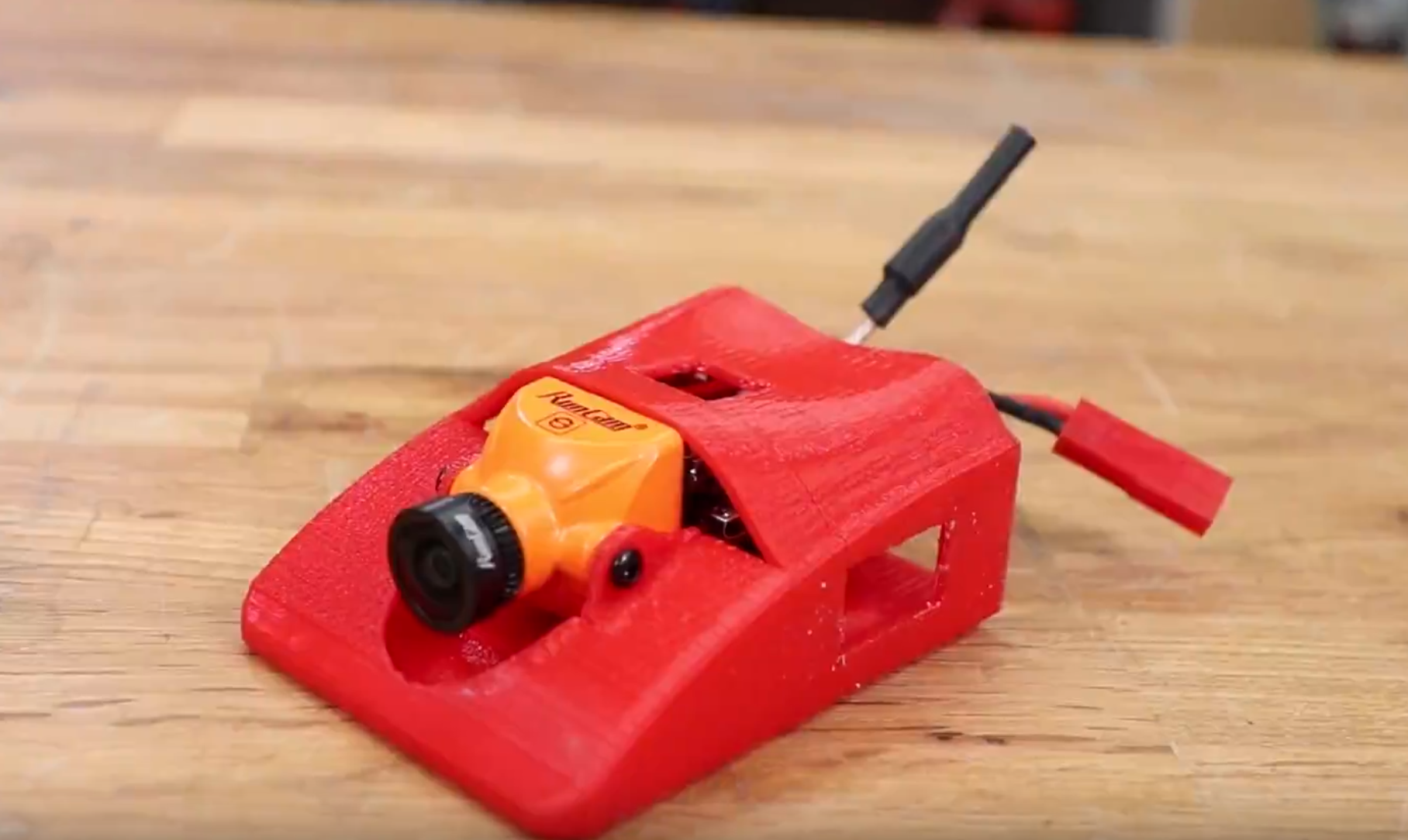
The Dart is going to be a pretty good friend of our other flying wings, and especially the FT Mini Arrow which has a similar form factor.

Using our brand new Power Pack H, the dart can remain small and manoeuvrable with easily enough power for some impressively fast flight performance. You can use from a 2s to a 4s with this RC airplane meaning that you have a very wide flight envelope to play with.

Using our favourite waterproof Flite Test Foam Board, the plane combines performance with durability. Put simply, it can take a beating and keep flying. If you have a heavy crash, all you'll need to do is add some tape and maybe a little hot glue. If you do plan on pushing hard and potentially crashing, make sure you have some buddies at the field - they always make flying even more fun.
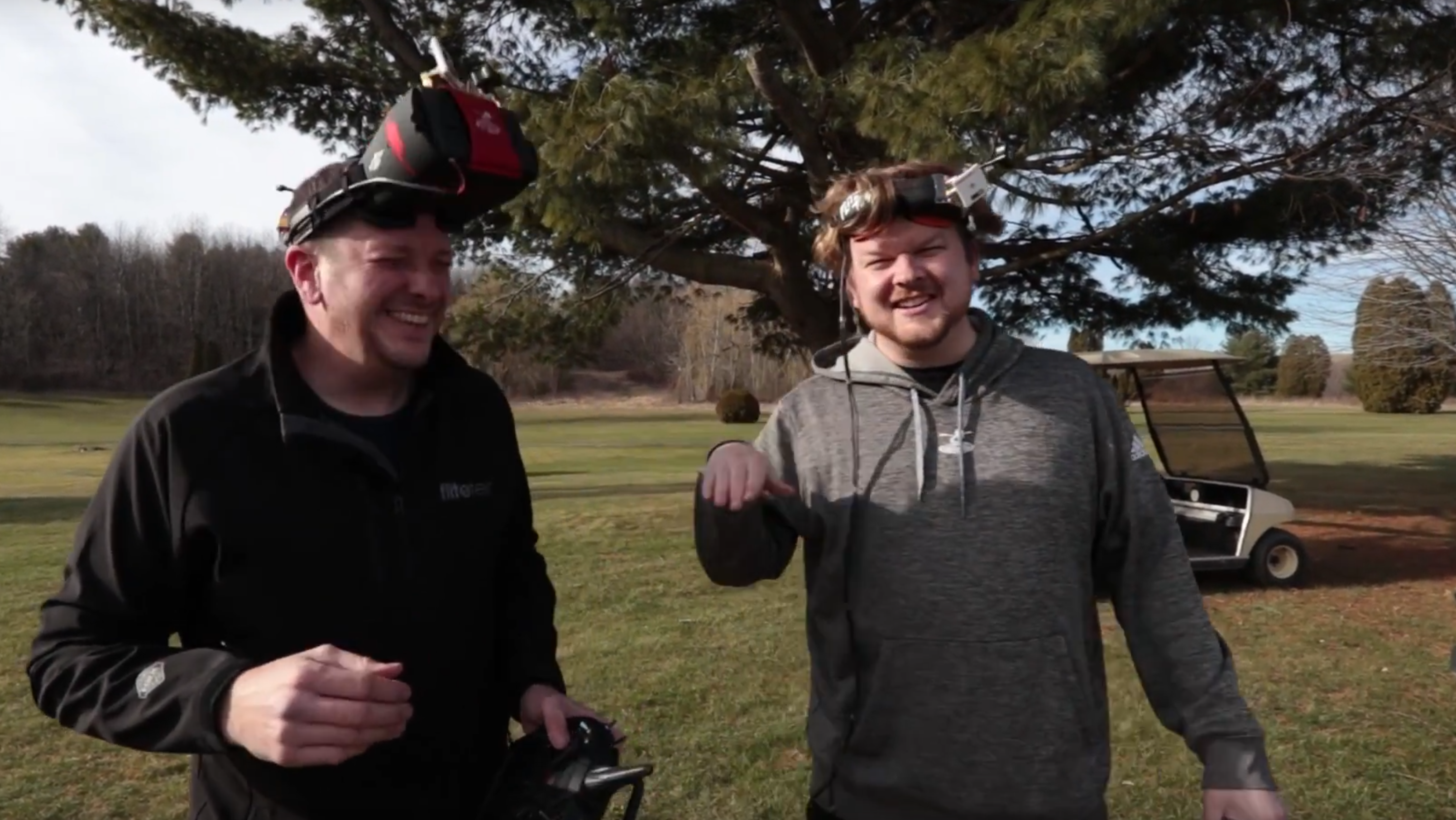
So, I hear you asking, 'how do I build one'? Don't worry, we have a brand new YouTube channel called Flite Test Builds where you can find the build video of the FT Dart. We've linked it here though, so you don't have to travel far (or at all).
If you don't want to watch the video all the way through to work out whether you actually want to build the FT Dart or not, here's a break down of each step. First, here are some helpful links if you haven't built many of our designs before.
- FT Dart Plans - AIO Format
- FT Dart Plans: Full Size Format
- FT Dart Plans: Tiled A-Size
- FT Dart PLans: Tiled B-Size
- Connecting Electronics: https://youtu.be/fcsgyed2Mhs
- 6 Tips For a Successful First Flight: https://goo.gl/l1KbCk
- No Knife - Building: https://goo.gl/tJdf4K
- Beginner Series: https://goo.gl/IF1oO7
Okay, let's get started!
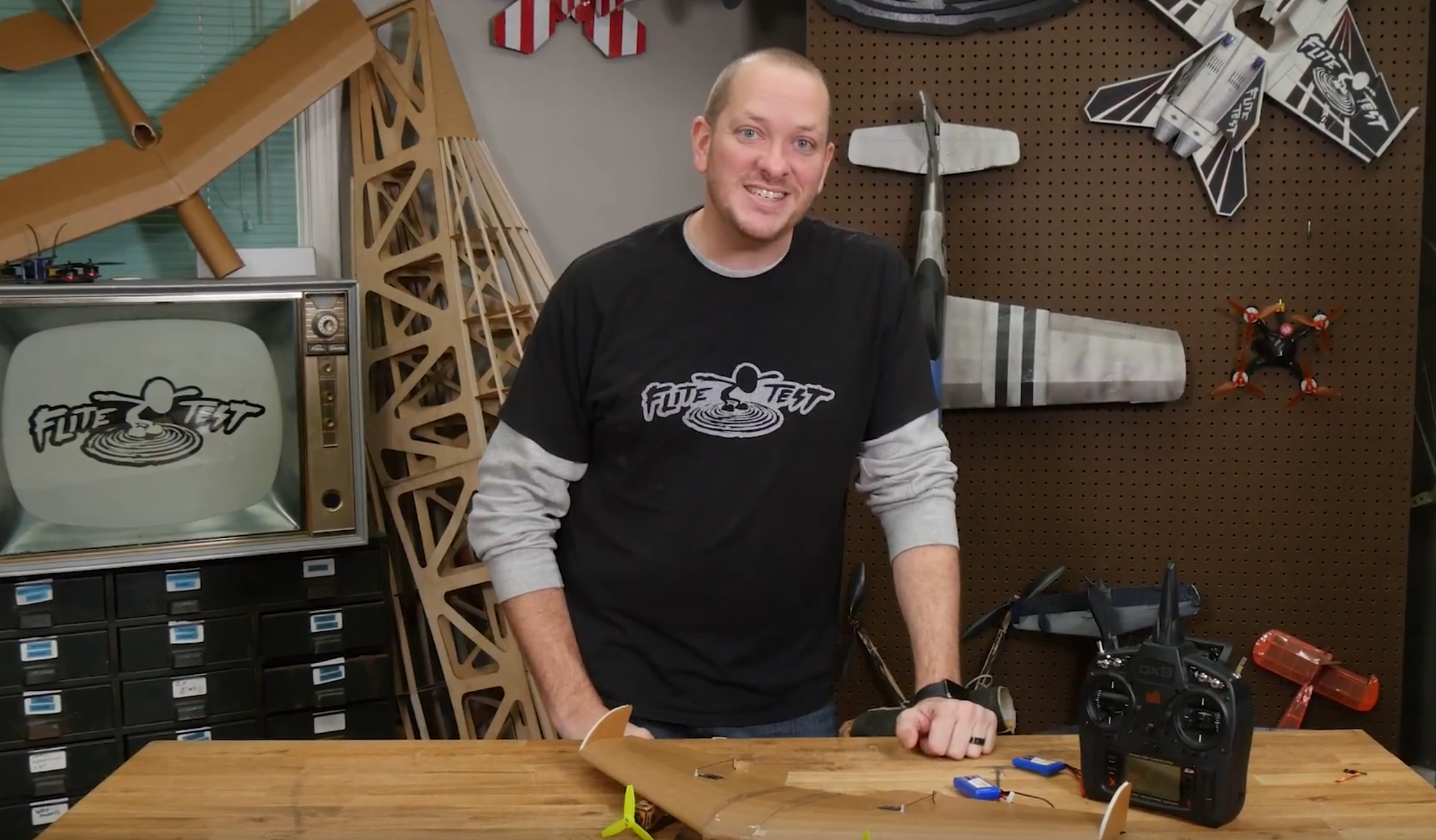
With this build, as most builds, you'll probably want to start by getting all of your electronics sorted out. The FT Dart requires slightly more wiring and soldering than most as this is a twin motor design with differential thrust. To help you do this, we've included a power distribution board in Power Pack H.
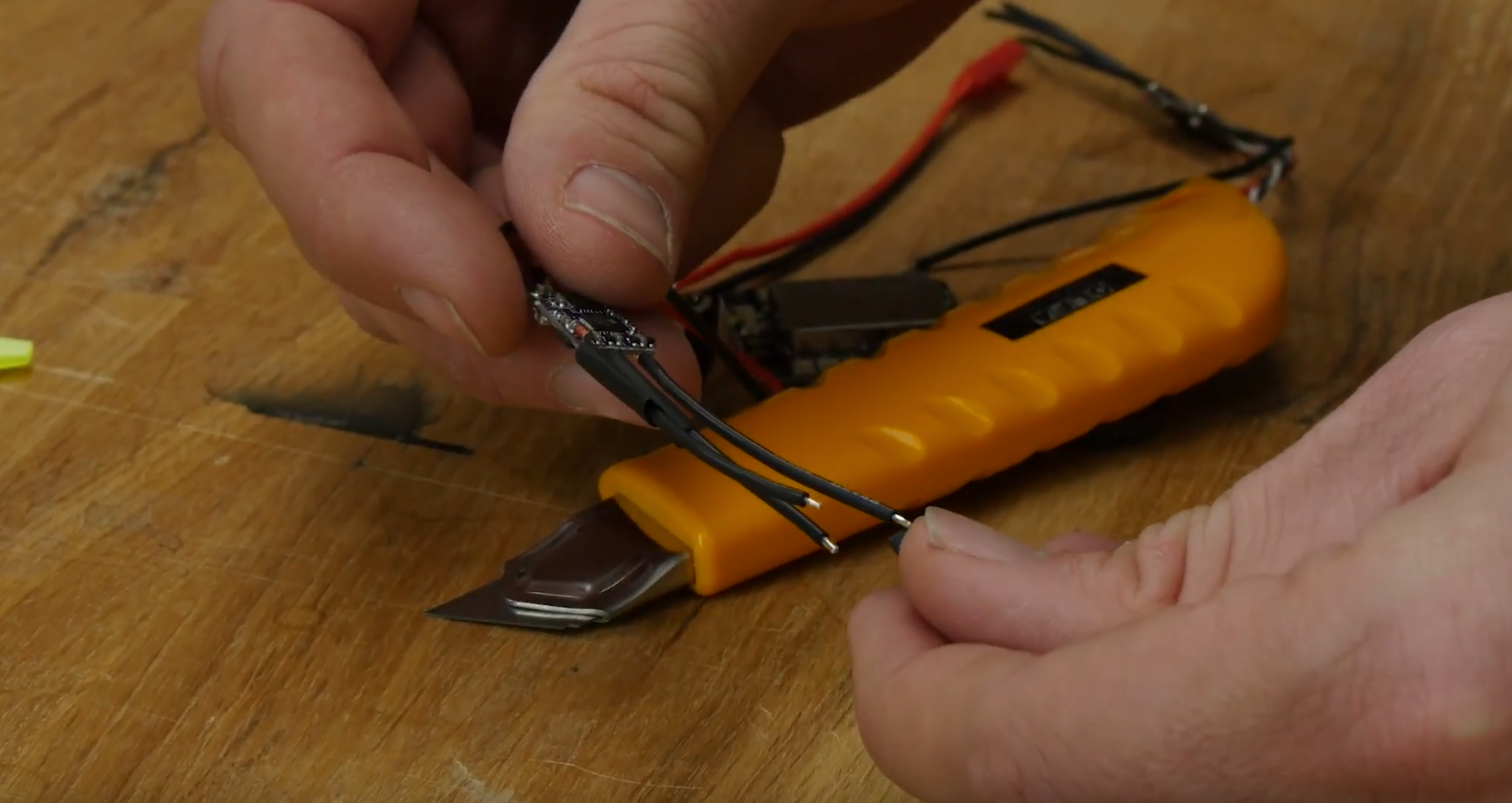
As mentioned, you'll have a little more soldering to do than usual. Don't let this put you off though! It's really easy once you've mastered it. Check out our how-to video which teaches you some soldering skills you can apply to your scratch built airplanes.
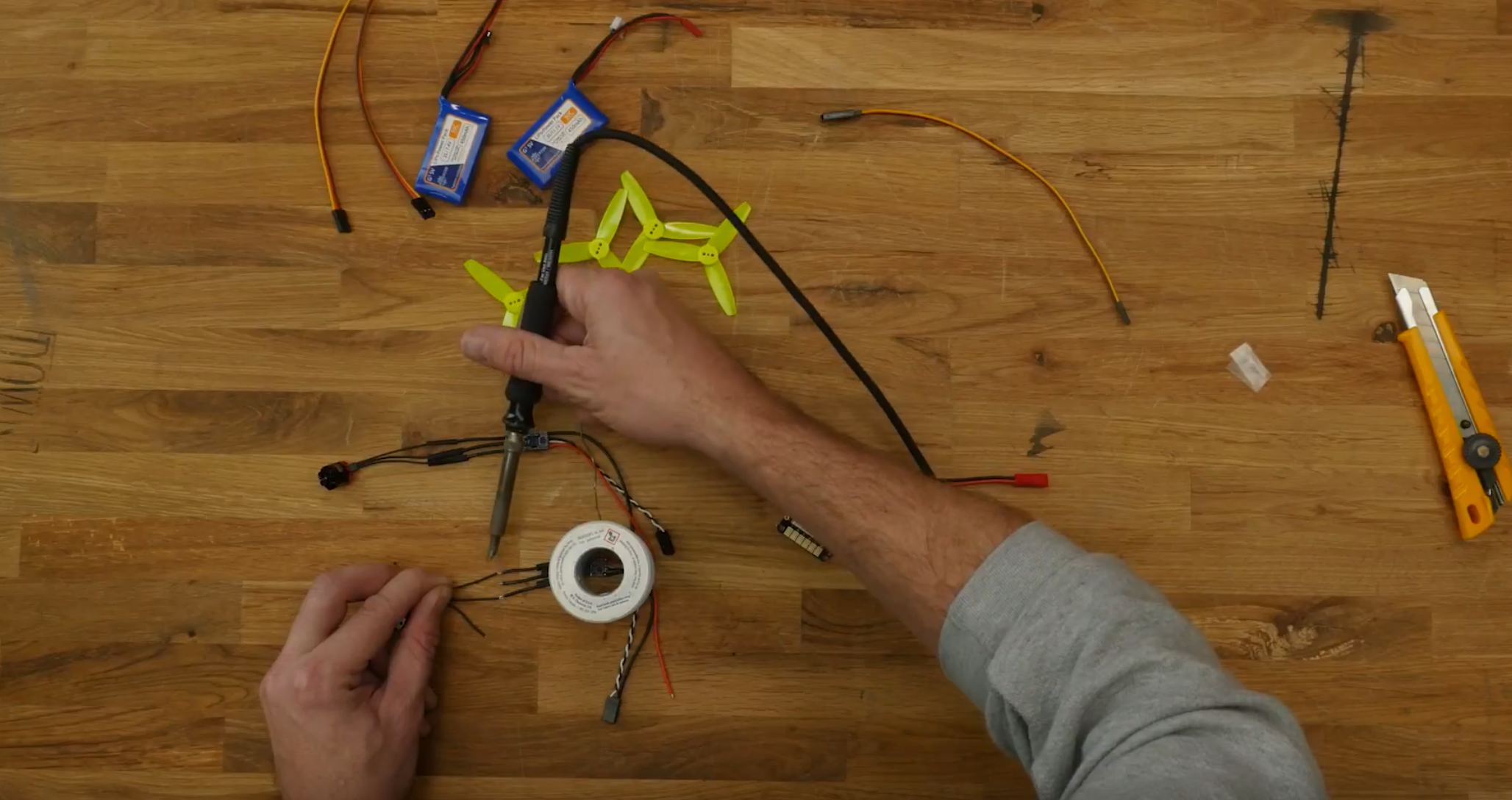
You'll be soldering your ESC wires to your power distribution board. This means that you can use one central battery to power your model. Make sure you get your positives and negatives the right way around.
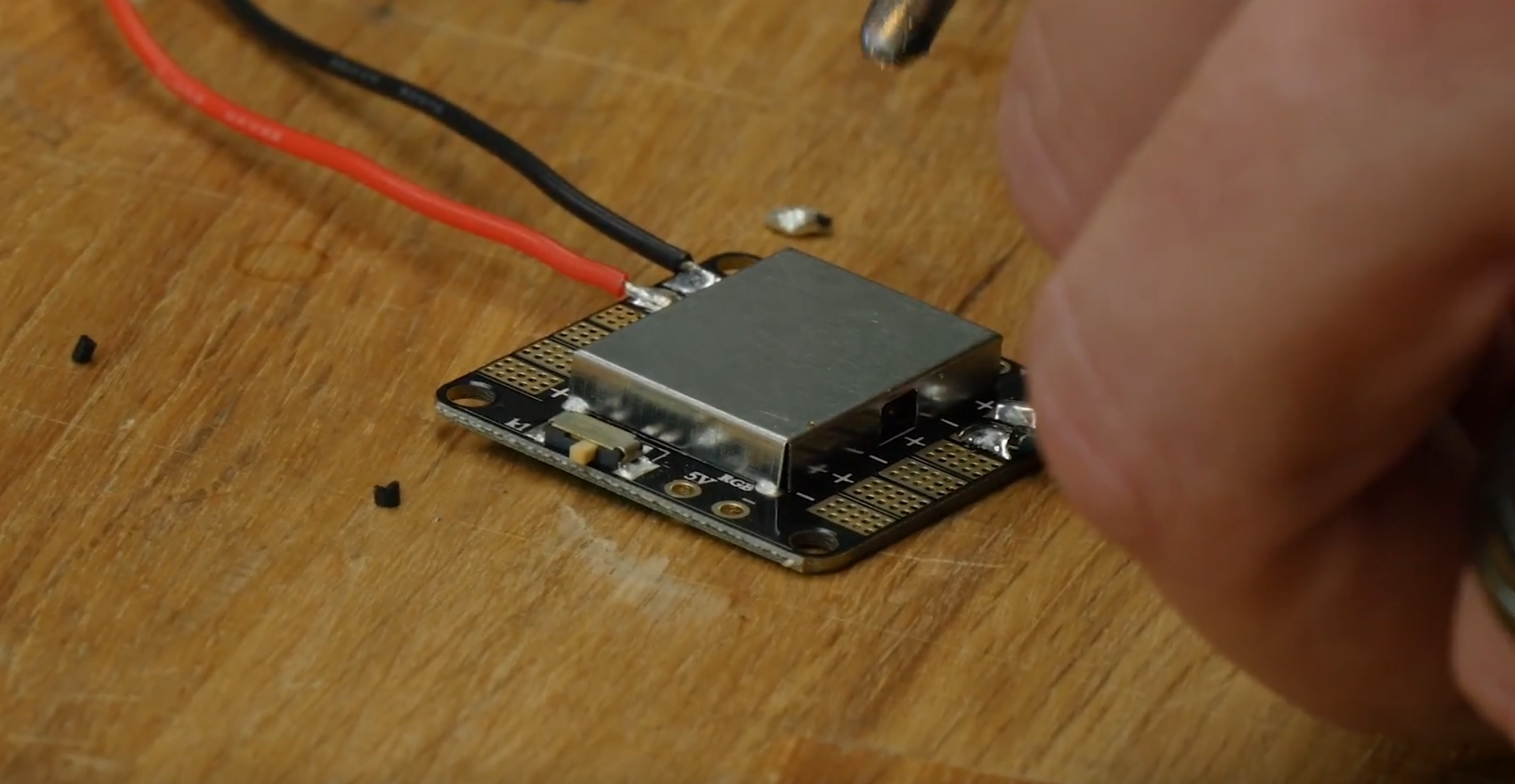
Tinning your board pads is the way to go when it comes to attaching the wires efficiently and cleanly.
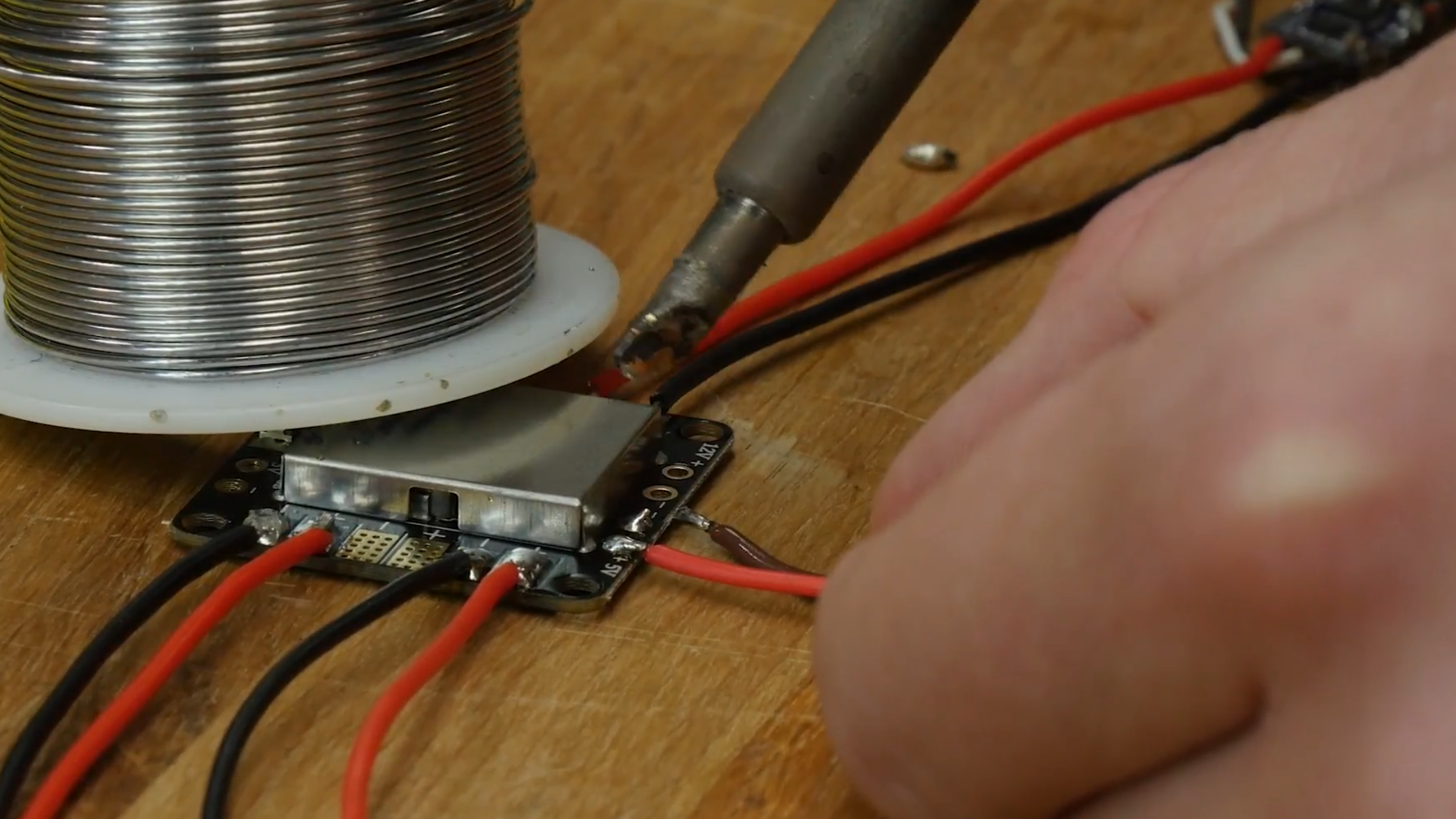
After you've followed the steps clearly explained by Josh in the FT Dart build video, you'll end up with a power setup that looks something like this.

Moving onto the foam board, you'll pop out the main components of the wing and get started preparing them for your folds that will shape the airfoil of the aircraft.
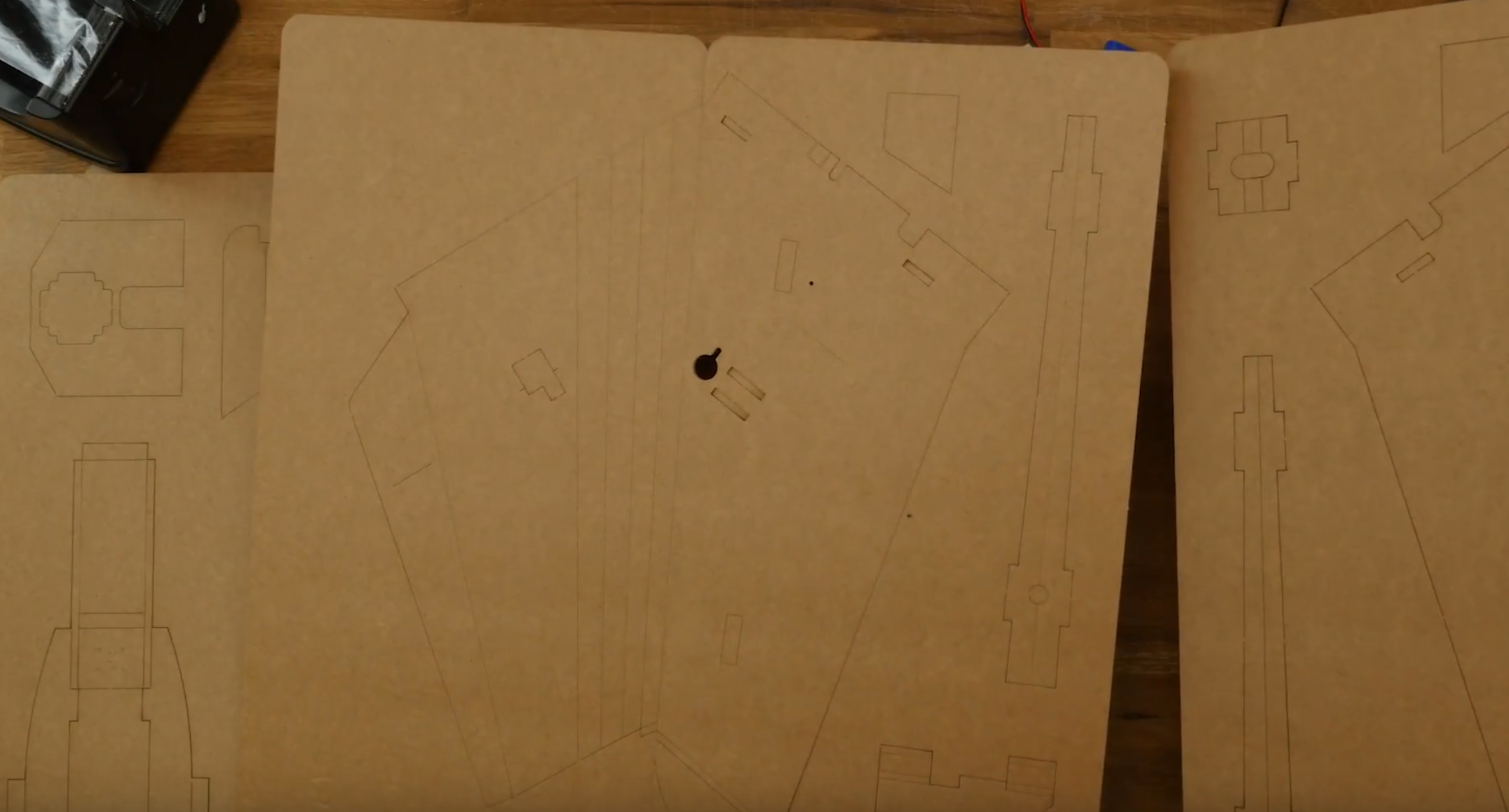
There aren't many parts to this wing when it comes to material, which is great for helping you build fast and get flying sooner.
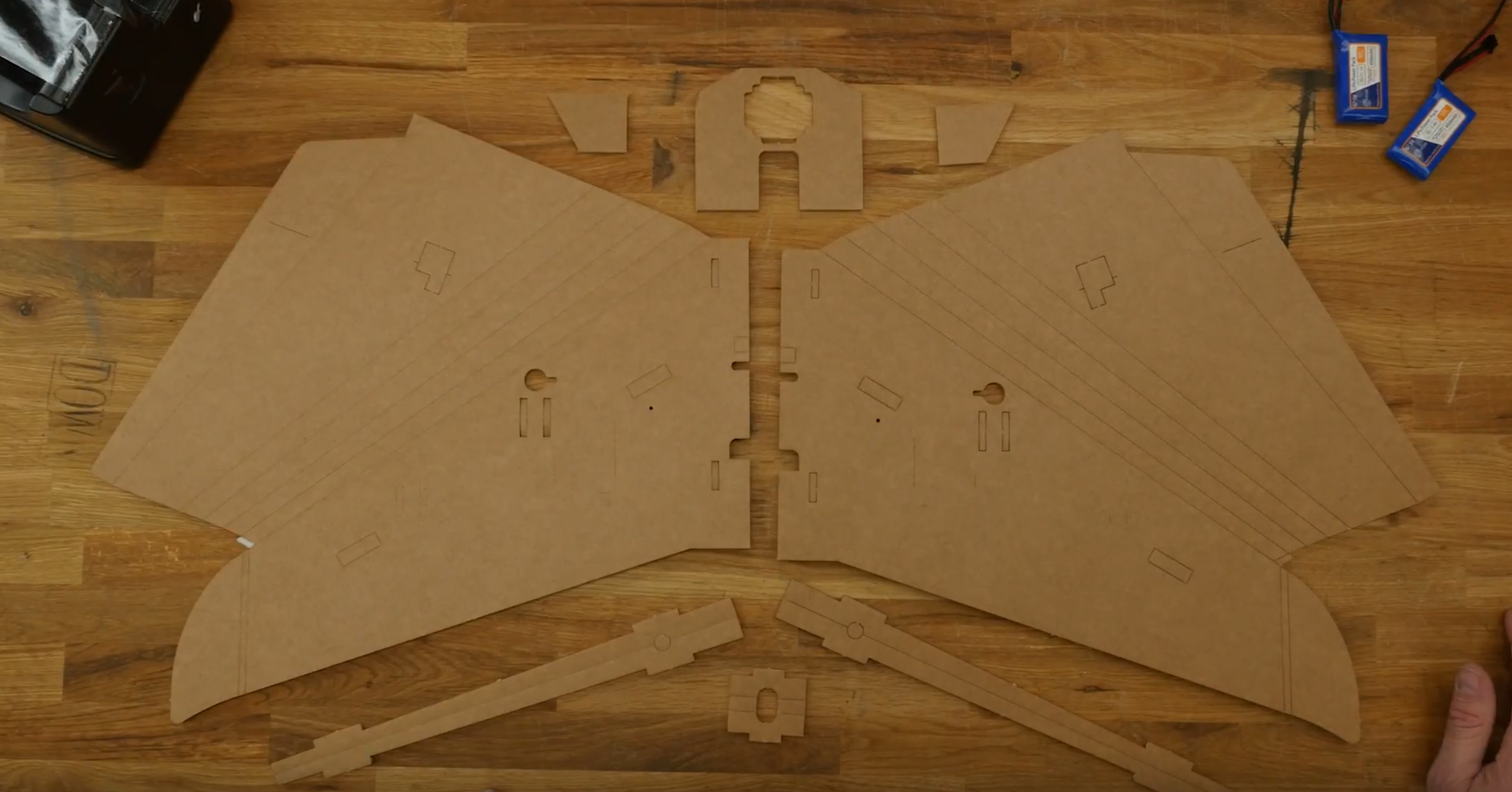
Tape is used, like with many of our planes, to initially attach the wings together. Glue is then poured down into the cavity and smeared smooth with a scrap piece of foam. It's always handy to have a lot of spare chunks of foam board lying around for this purpose. After about a minute of drying, you'll have a very strong joint.
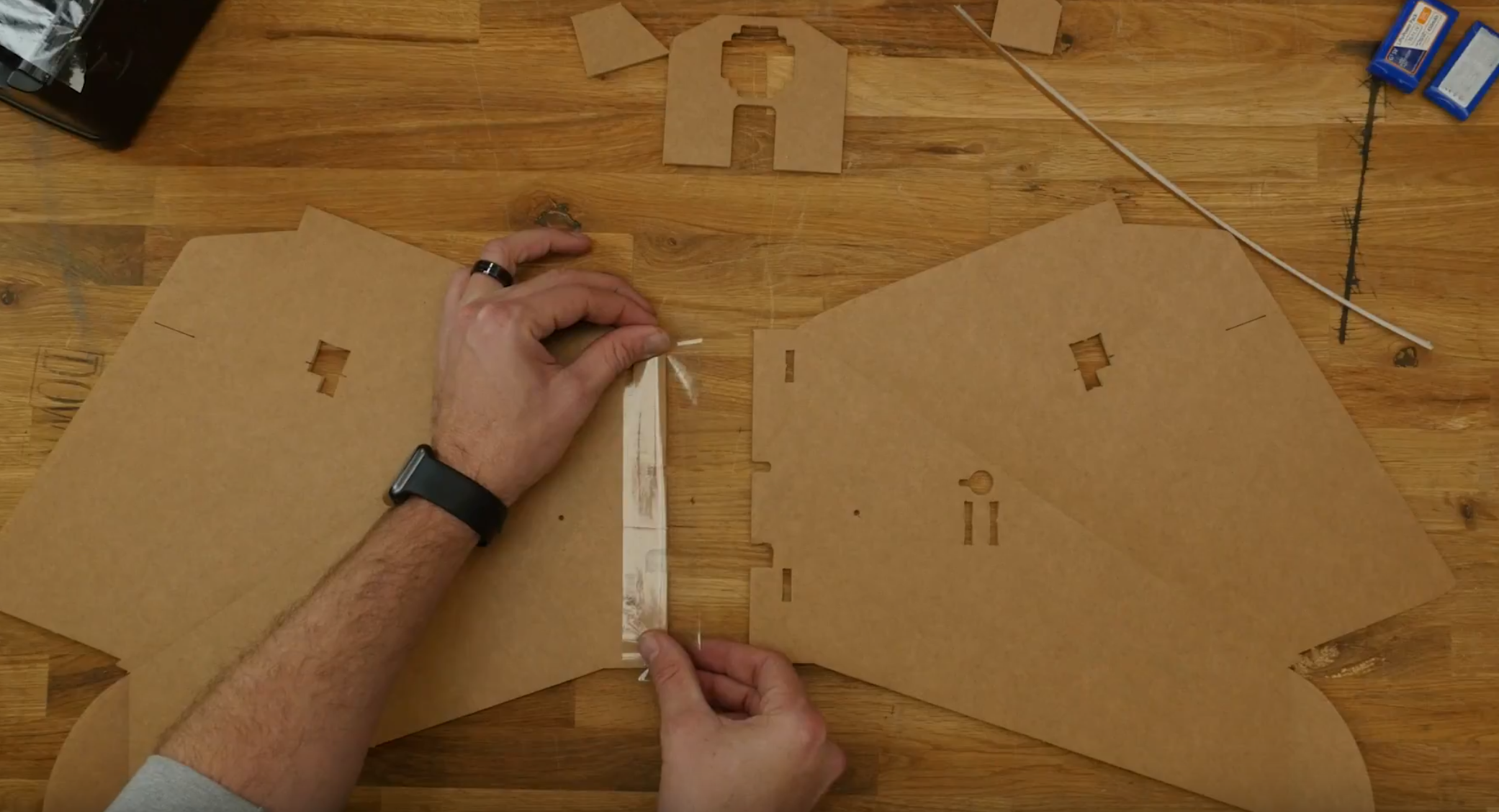
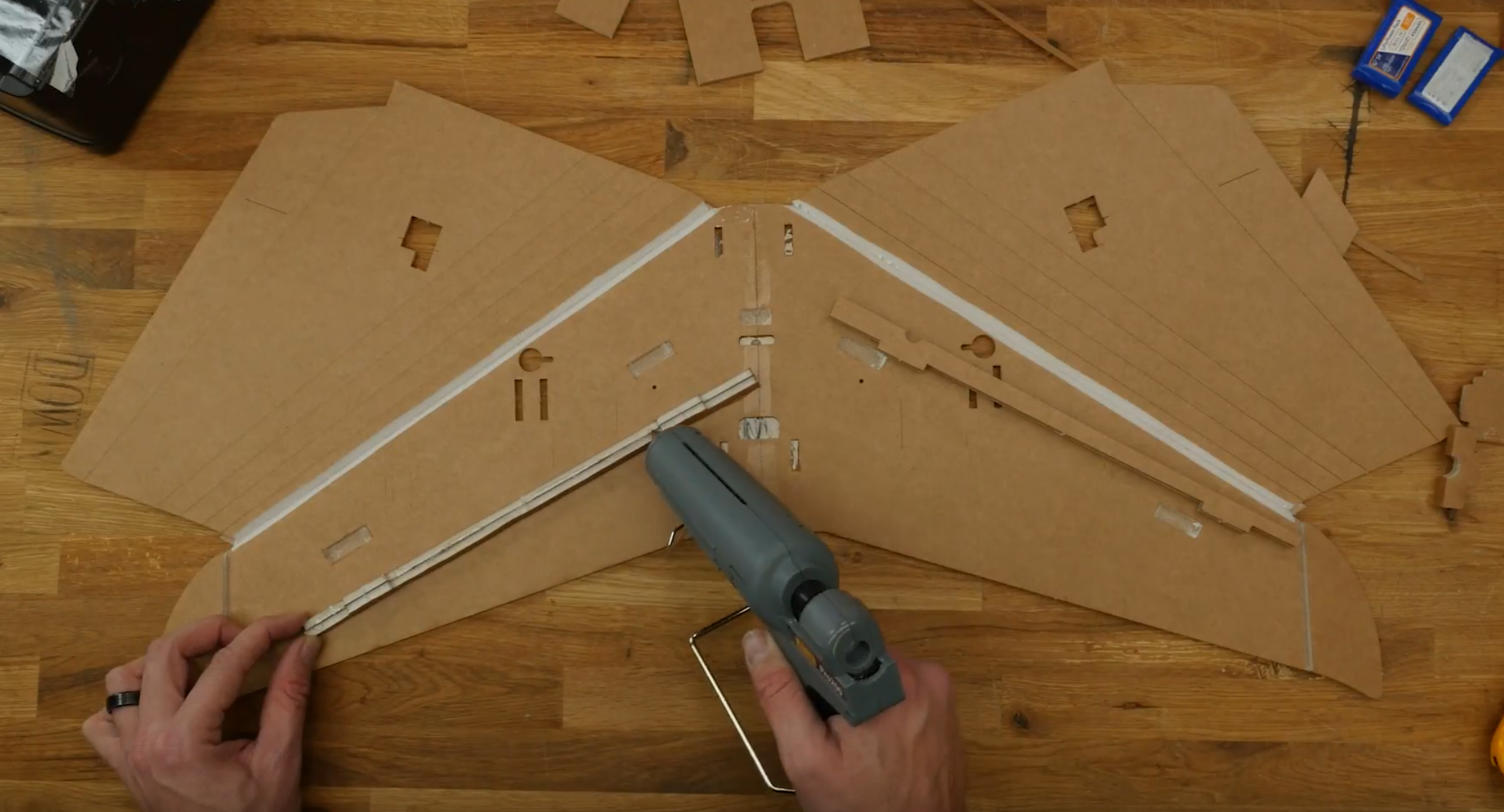
The spar pieces are glued into the wing which includes holes to guide your wiring through.

The wing is folded over and glue in place. A Barbecue skewer is used at the leading edge of the wing to ensure that the FT Dart can take some hits from race gates, or even other wings!
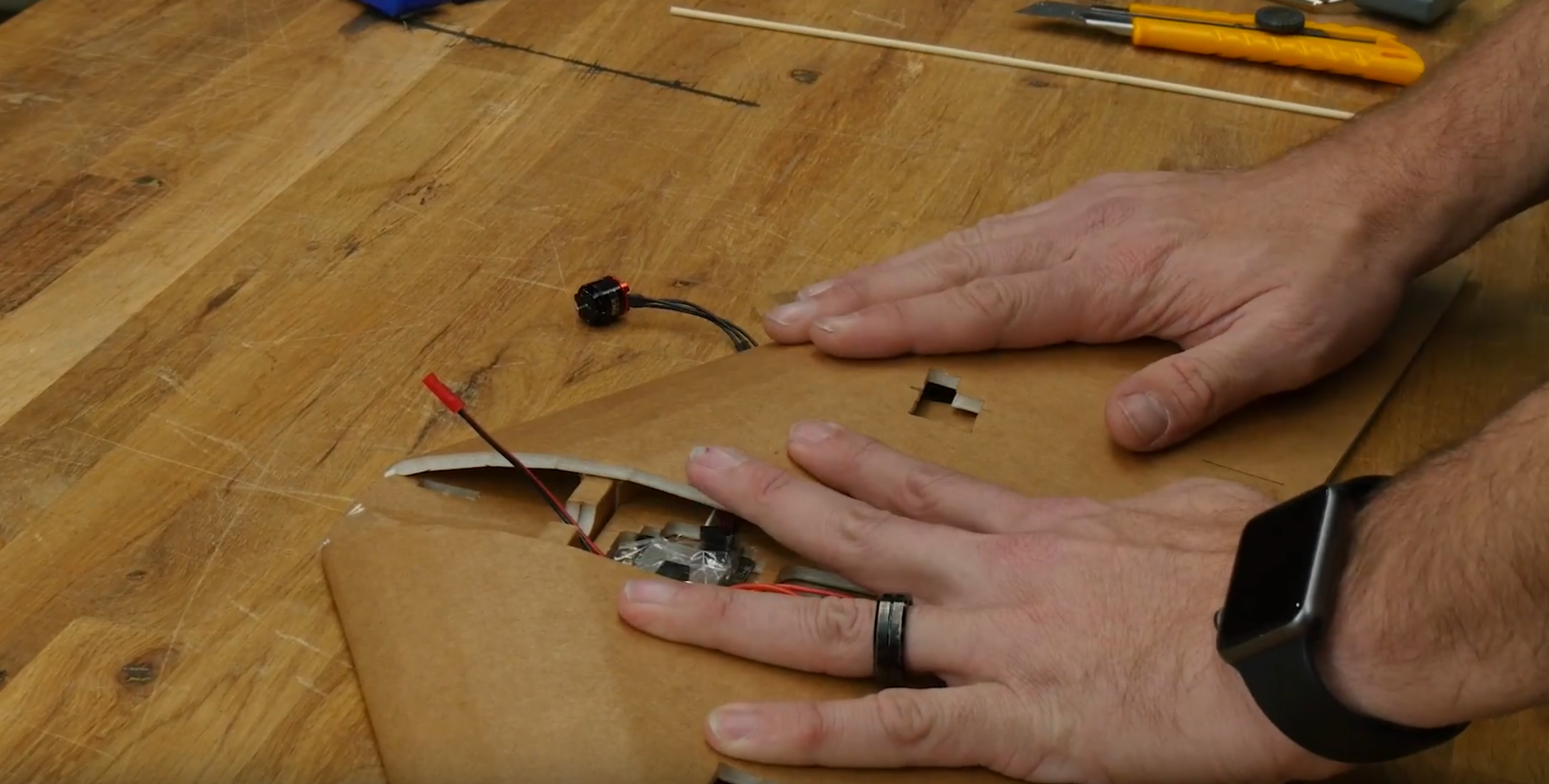
Servos are glued into the wing to bring your elevons to life.
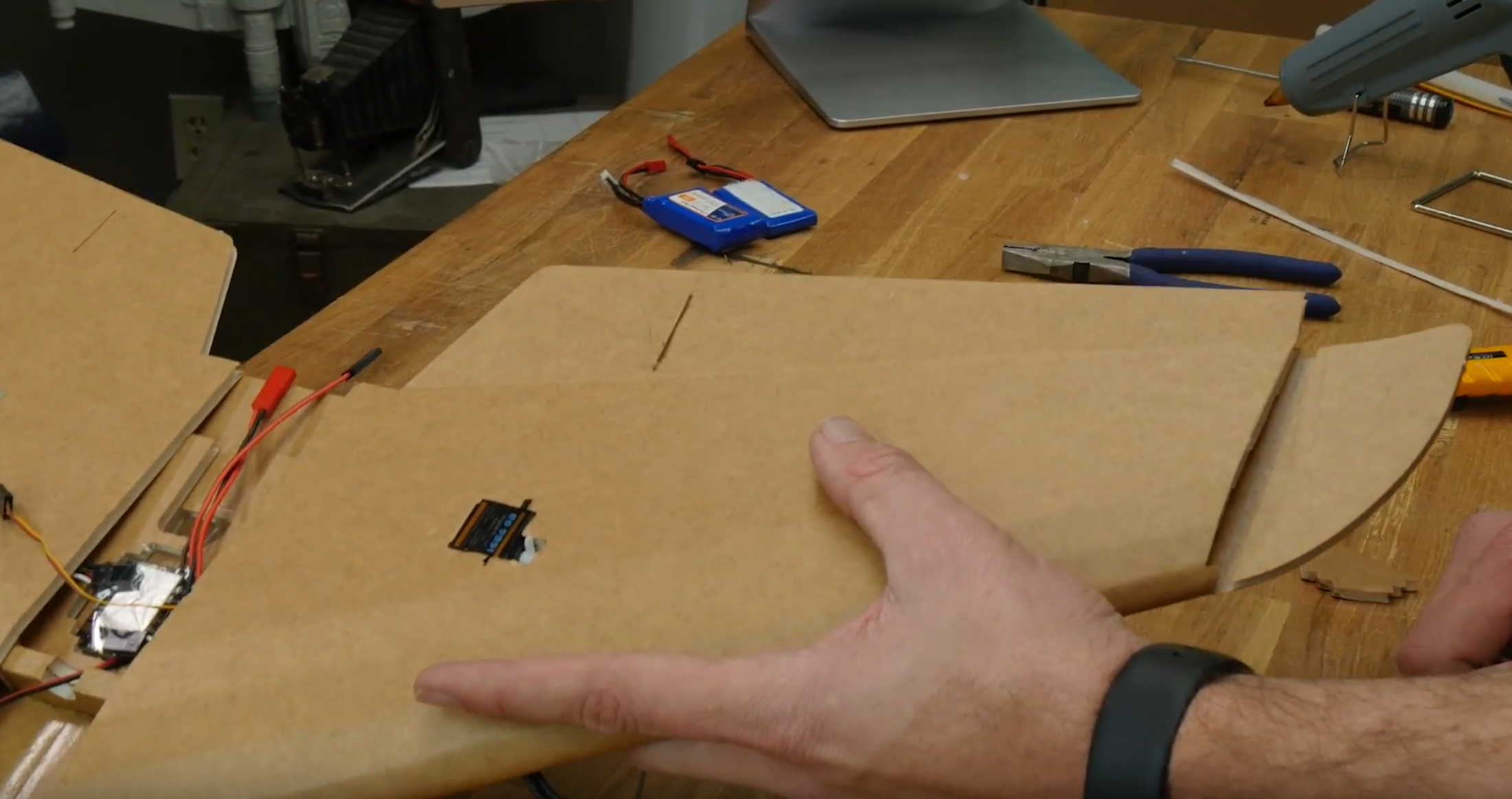
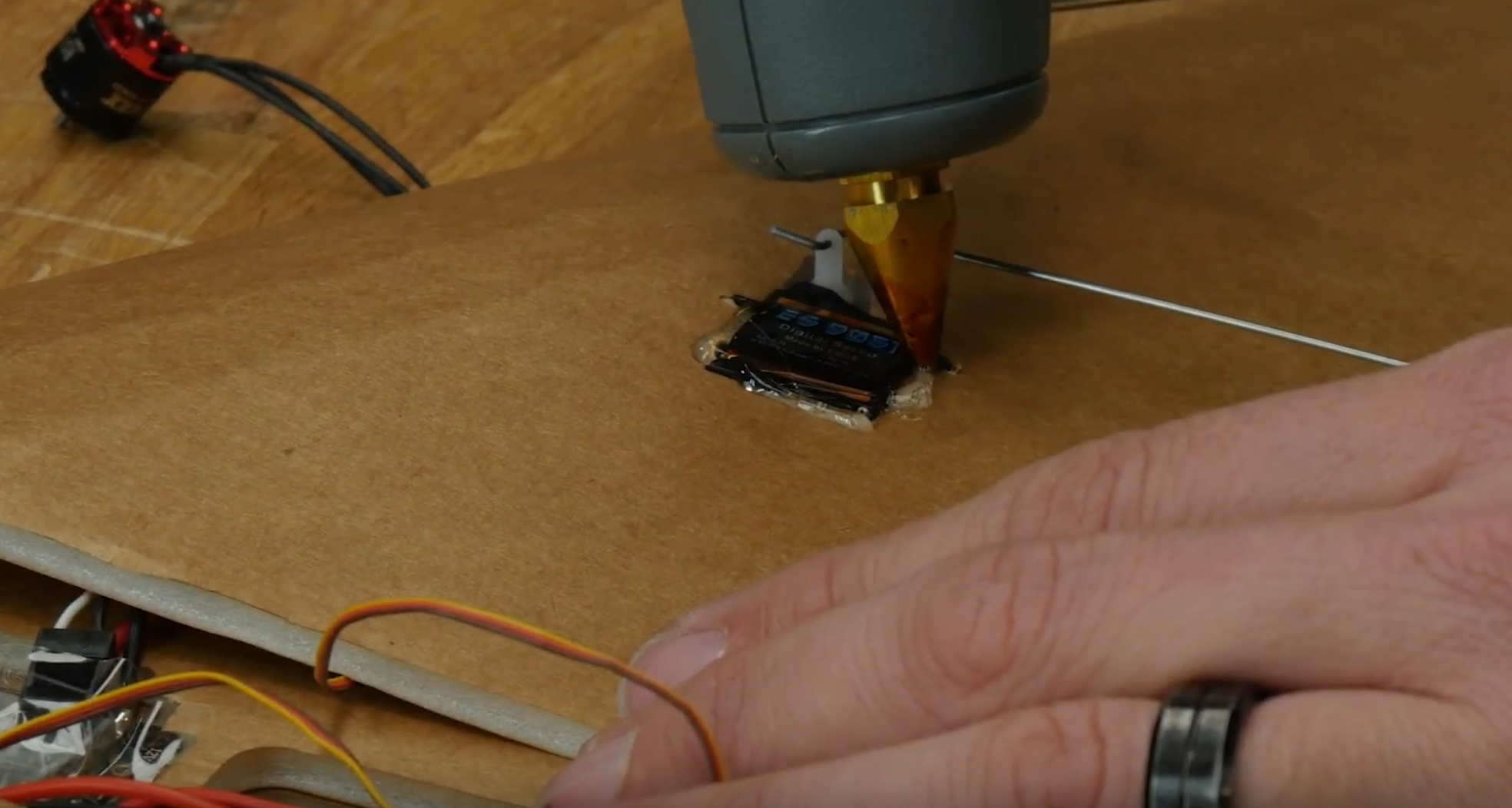
Moving onto the motors, this model uses laser cut wooden components to make some extremely strong motor mounts. These are glued into foam board necelles that hang beneath the wings.
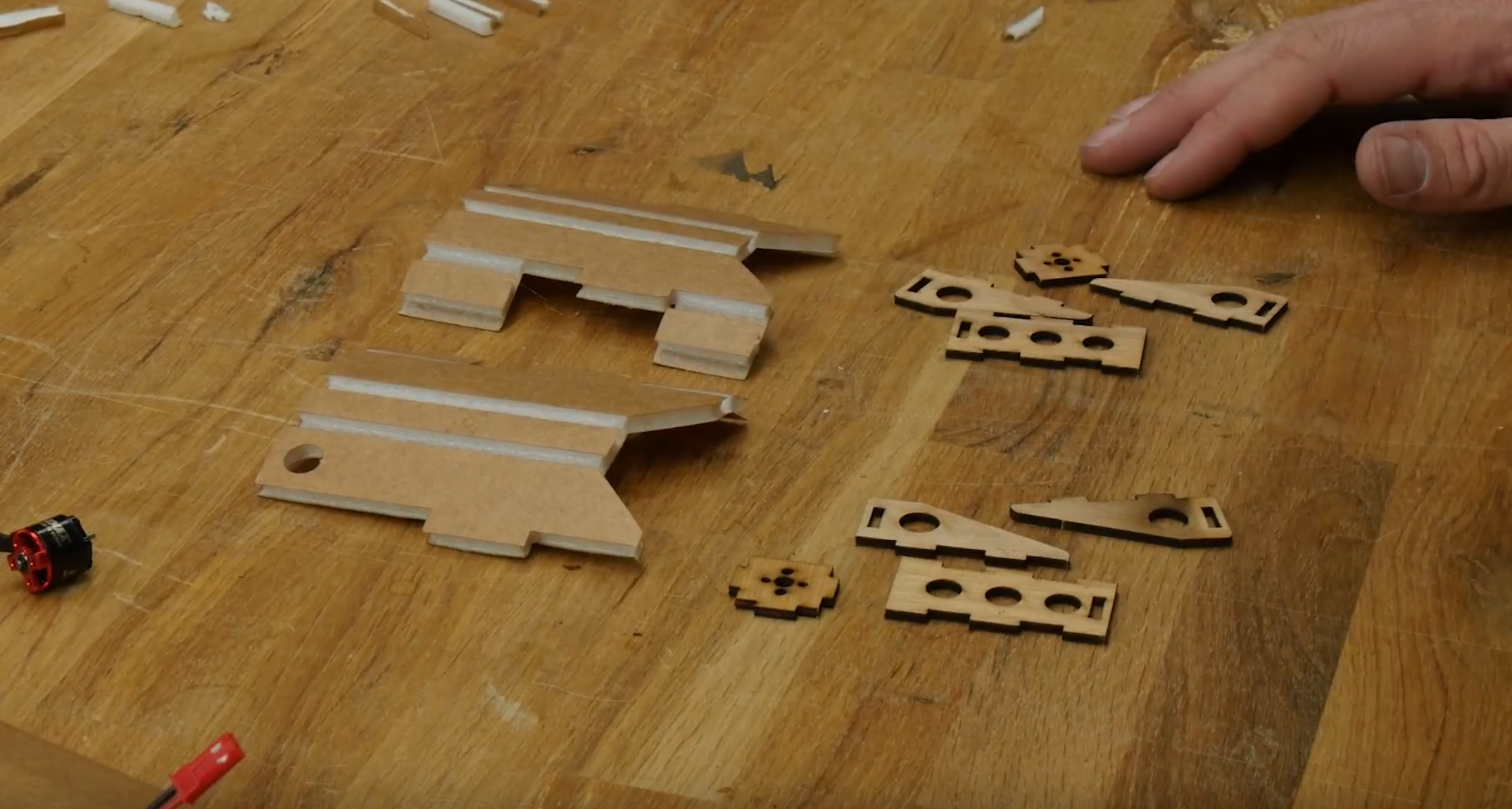
At this point, you can install your micro motors by screwing them to the motor mounts.
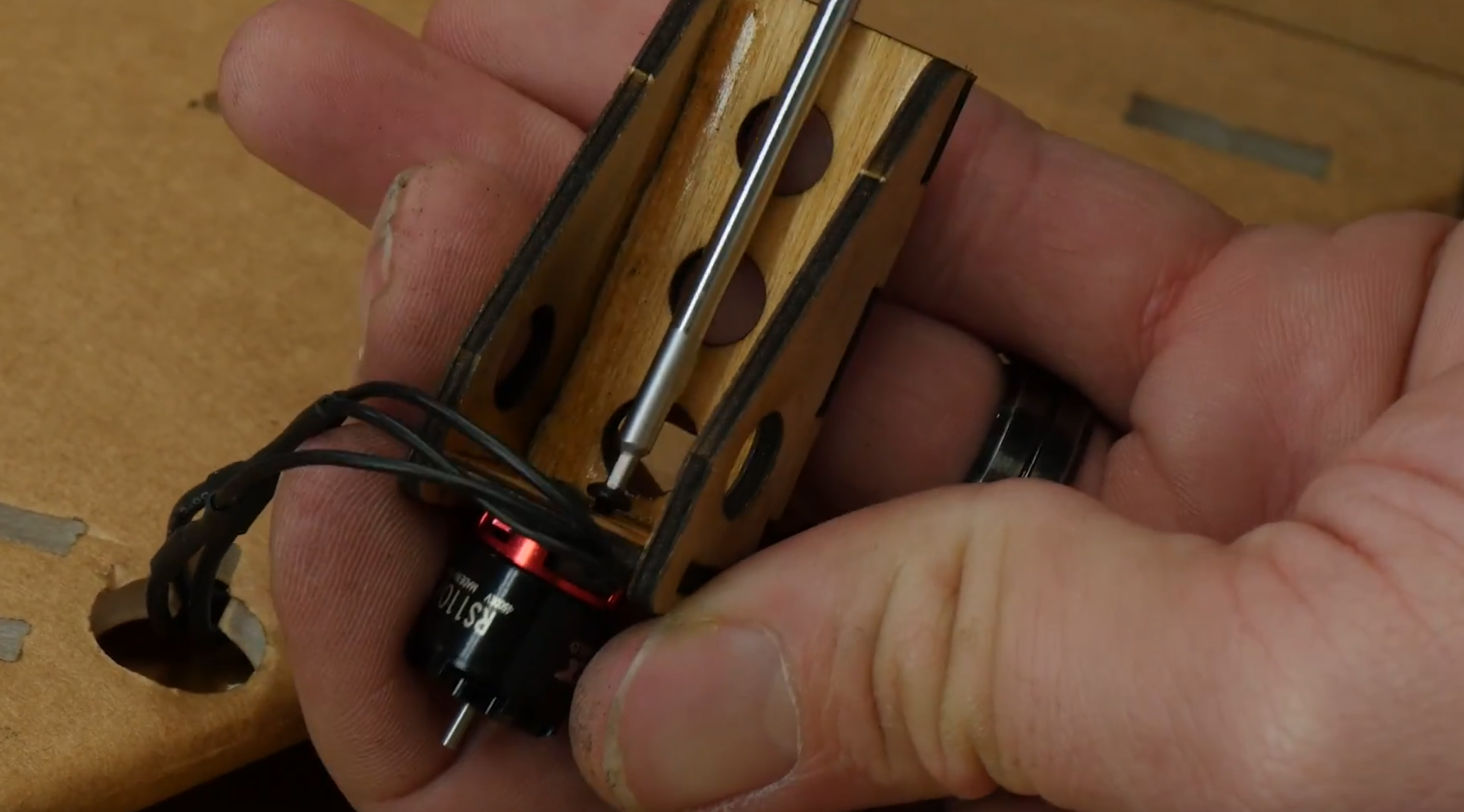
The centre section is simply folded from foam board. Even if this wing is your first FT build, but this stage after glueing the nacelles together, you'll probably be familiar with how the pod folds together. At this stage, you can also choose to glue in a 3D printed pod that we've provided free files for, if you intend to use the wing for FPV. You can also use this later if you'd prefer to fly line of sight first.
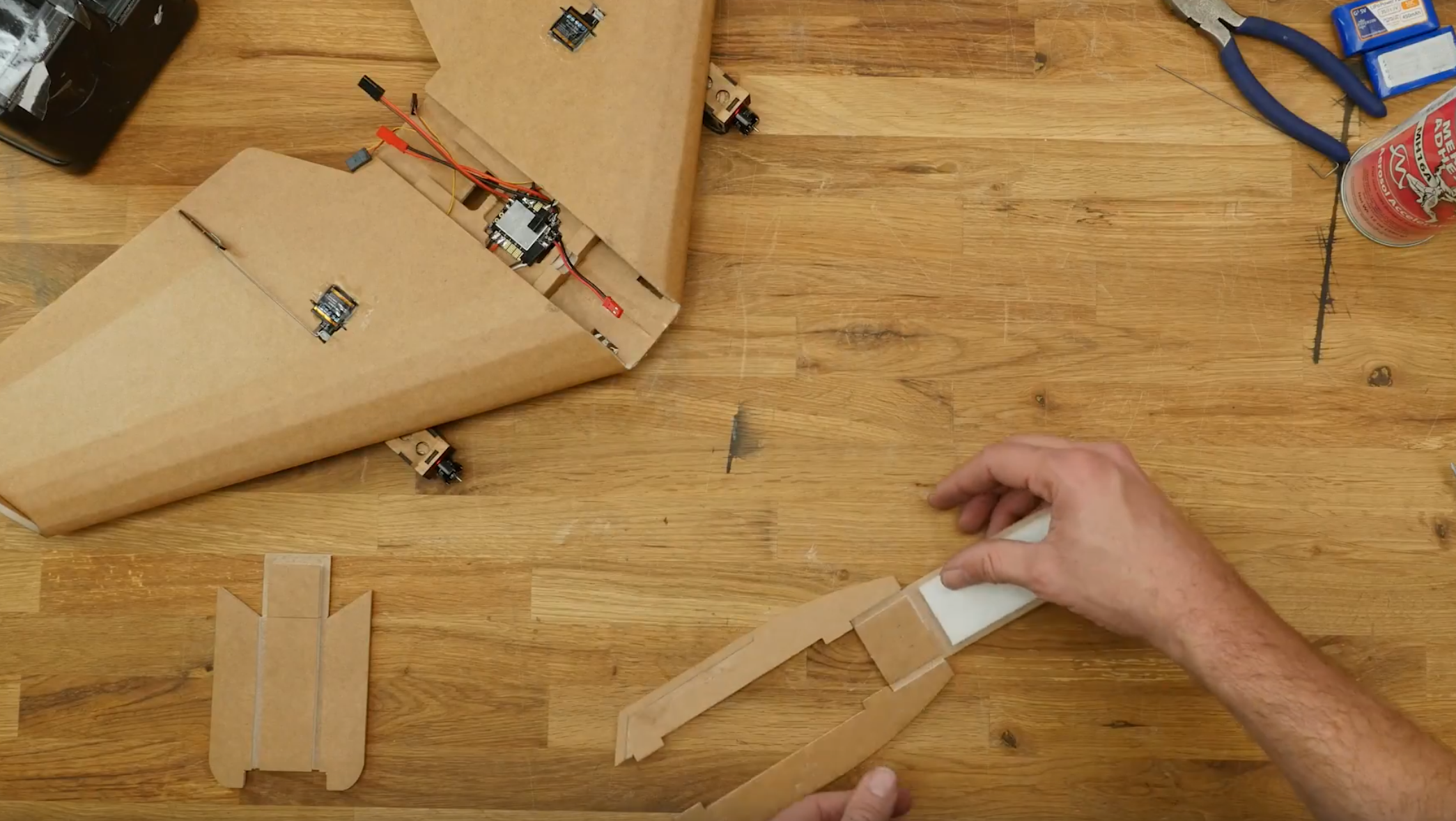
After this, you're ready to install all of your electronics including your receiver. Make sure you follow Josh's guidance on the video to get this right first time.
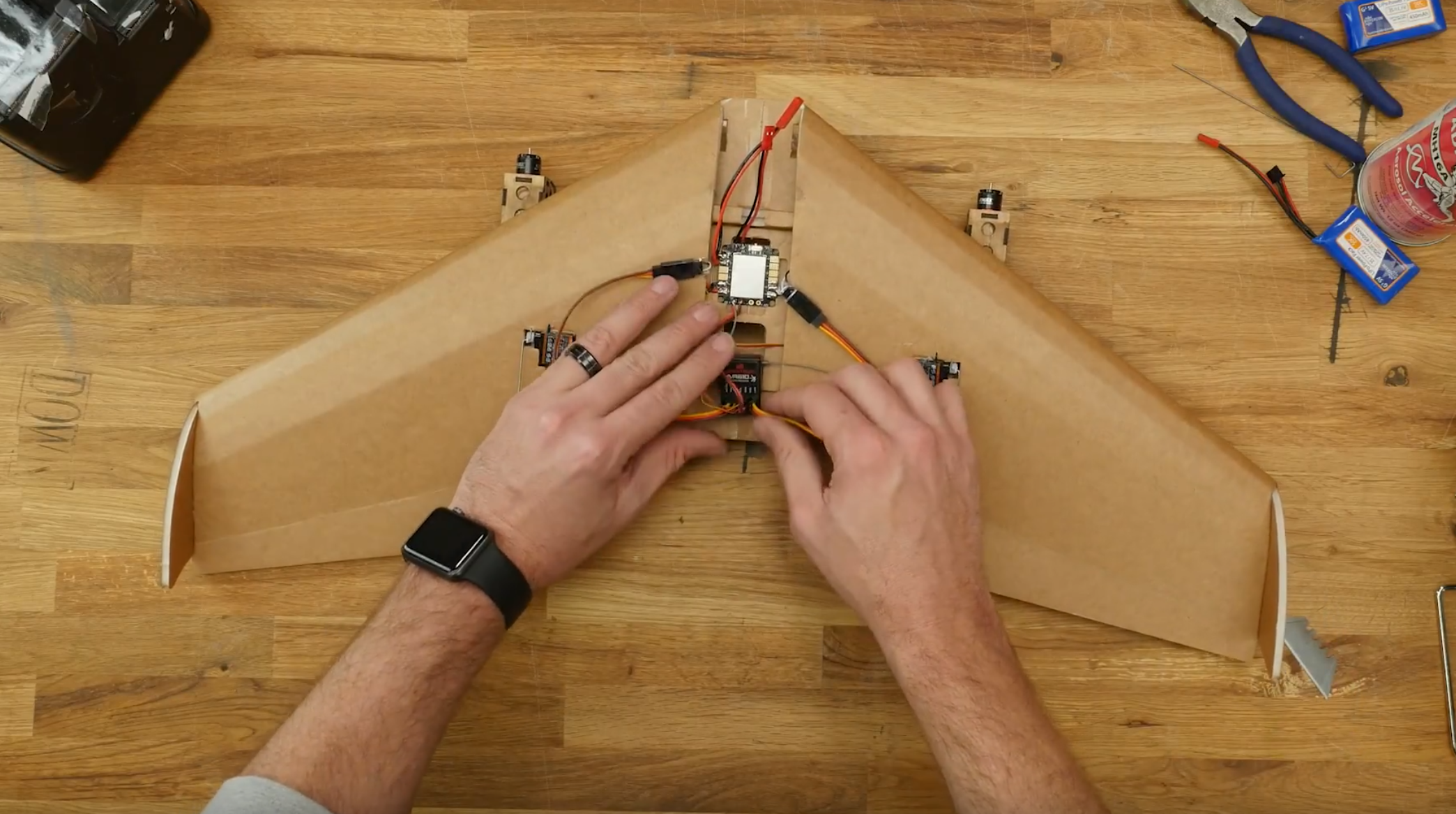
Next comes setting up your control surfaces and differential thrust on your transmitter. This is a simple case of creating a special mix for the FT Dart.
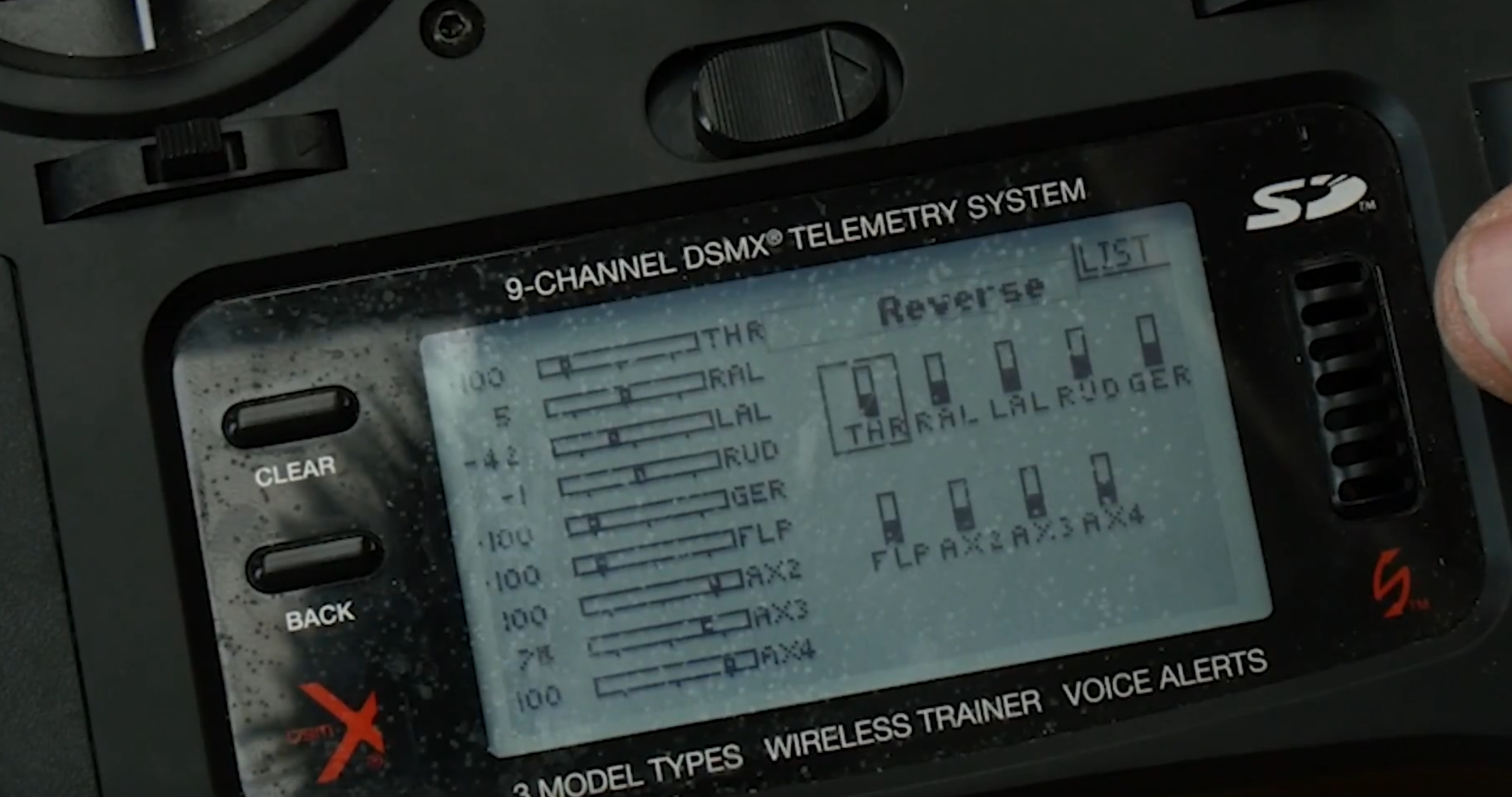
The last step is to locate your battery to find the proper centre of gravity. The centre of gravity is very important on a flying wing, but that's okay as there's a lot of space at the front of the FT Dart to move your battery around to find the perfect position.

With that, it's maiden flight time!
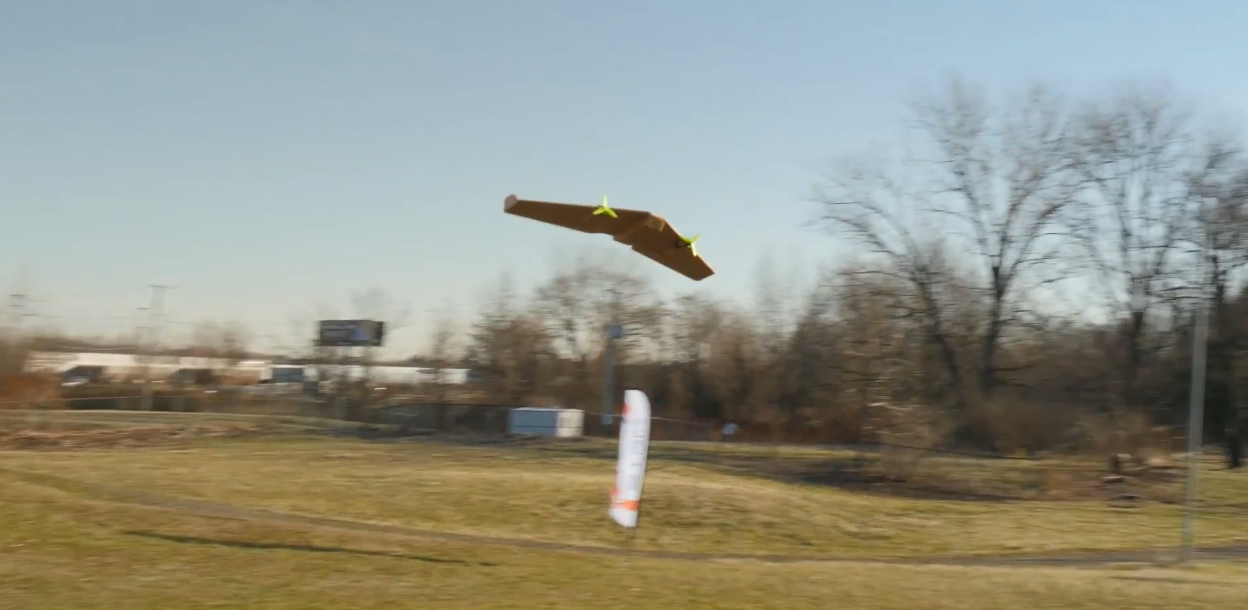
We hope you have a great experience with the FT Dart. It's an extremely enjoyable plane to fly, as can be seen by the grinning faces all around in the main flight video. If you build a Dart, let us know by posting a picture of your plane on the forum or even by writing an article about how it went here on flitetest.com. Happy FT Dart Flying!
Links
Article by James Whomsley
FliteTest.com Editor






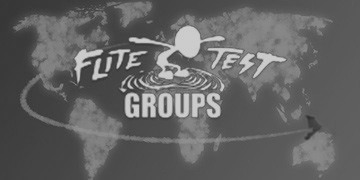

Log In to reply
Log In to reply
Log In to reply
This plane really does take a beating but I finally had to order another. A tail heavy plane flies once unless it's an FT Dart.
Log In to reply
Log In to reply
Log In to reply
Log In to reply
Log In to reply
Log In to reply
Log In to reply
Log In to reply
Log In to reply
Log In to reply
Great design, kudos on the intern for making it happen and congrats on the new field.
Just about to finish a 150% Ft dart; easiest build so far, joy to put together.
I'm hoping this will work with some 2206 motors and a 4s1500mah.
Log In to reply
saluute
Log In to reply
saluute
Log In to reply
saluute
Log In to reply
Log In to reply
Installed fpv stuff in there.
Along with a battery 3s2200mah weighing in at 850 grams it seems a bit heavy. I havent got the slightest clue weither it will fly well even in windy conditions or wether its just a radiocontrolled brick..😅
Log In to reply
- its fast even on 3s (Don’t know About 4s since the landinggear broke before i had a chance to try and i didnt trust my 6inch props in a belly landing)
- handling and power setup seems proportional to the enlarged dimensions.
- it s definetly not a brick😁
Log In to reply
Log In to reply